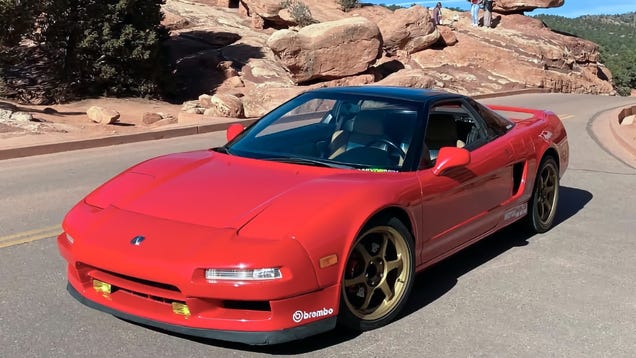Of course it began with American Motors. The Bicentennial of the American Revolution was beginning to appear on the outer edge of the American psyche, and it's only logical that little AMC would be the first to capitalize. However I do believe it was accidental.
AMC had been trying to create a more youthful image with youthful cars like the Javelin and the AMC, and entered a specially prepared AMX in the SCCA Trans Am racing series. As an attention getter, the car was painted in bands of red, white, and blue- a scheme so effective that they offered it as a limited availability option for sale on the production AMX.
The SC/Rambler of 1969 was another image car from AMC, this time done in conjunction with Hurst. The little Rambler coupe had a 343 V8 stuffed under the hood and a series of performance mods so that the car would keep up. Again a color scheme of red and blue accents against a white field. This notion would prove popular.
Another AMC performance car was "The Machine:, a 1970 offering based on the AMC Rebel. They were offered in one color scheme, again with red and blur striping on a field of white.
Ford got in on the fun for 1972 with their "Sprint" packages available on Mustang, Maverick, and Pinto two door coupes. The cars all featured white paint with blue striping outlined in red, wheel covers with trim rings, Sprint deals, and white interiors with blue seat inserts and red piping, Carpets and dash were blue. These were very successful for Ford.
Chevrolet saw a good idea and responded with their own "Spirit of Anerica" models. Based on Nova, Vega, or Impala Custom two doors (the Nova and Vega were hatchbacks), they featured white or dark blue interiors, white interiors with blue accents, color toned wheels, special striping, and "Spirit of America" emblems. They were offered one year only.
Bicentennial fever was reaching a fever pitch when Buick decided to go all out. They had been selected as the Pace Car for the 1975 Indianapolis 500 and the car they created was very dramatic. Designer Gary Smith created an American Flag that swept along the sculptured flanks of the Century. The car proclaimed "Free Spirit" on the front fenders and featured a white interior accented in blue, white wheels, and blacked out trim. A few hundred identical replicas were sold through Buick dealers.
Not to be undone, the Official Support Vehicles for the 1975 Indy 500 were GMC Trucks. They were also finished in white and had red and blue strobe striping to harmonize with the Free Spirit Buick Pace Cars. They also had special interior trim.
Here's a Bicentennial oddball- a Dodge Colt done up in a red, white and blue package. Called the Carousel, It featured a blue vinyl roof, blue striping outlined in red, and a white interior with blue seat inserts surrounded by red piping. I guess nothing says American Exceptionalism quite like a Japanese car. It was offered in 1975 and 1976.
Dodge also had a model for those who prefer American made products- the "Spirit of '76" Dart Sport. Again in white with a white interior, it featured sport wheels, red and blue exterior striping and decals, and blue seat inserts and accents set into a white interior.
And last but not least, the Queen of them all, the 1976 Cadillac Eldorado Bicentennial convertible. Built to commemorate the final edition of the Eldorado as a ragtop, these triple white cars featured red piping and environment, red and blue pinstriping, and white wheel discs (all other '76s had black.) In addition, each had a dash plaque proclaiming it to be one of the last 200 production convertibles. For now, anyway.
Of course, this list isn't intended to be exhaustive and there will be other examples that come to light- especially dealer editions and aftermarket striping kits, but I thought it would be fun to highlight some of the special editions of the red, white and blue. Happy Independence Day, everyone!























































